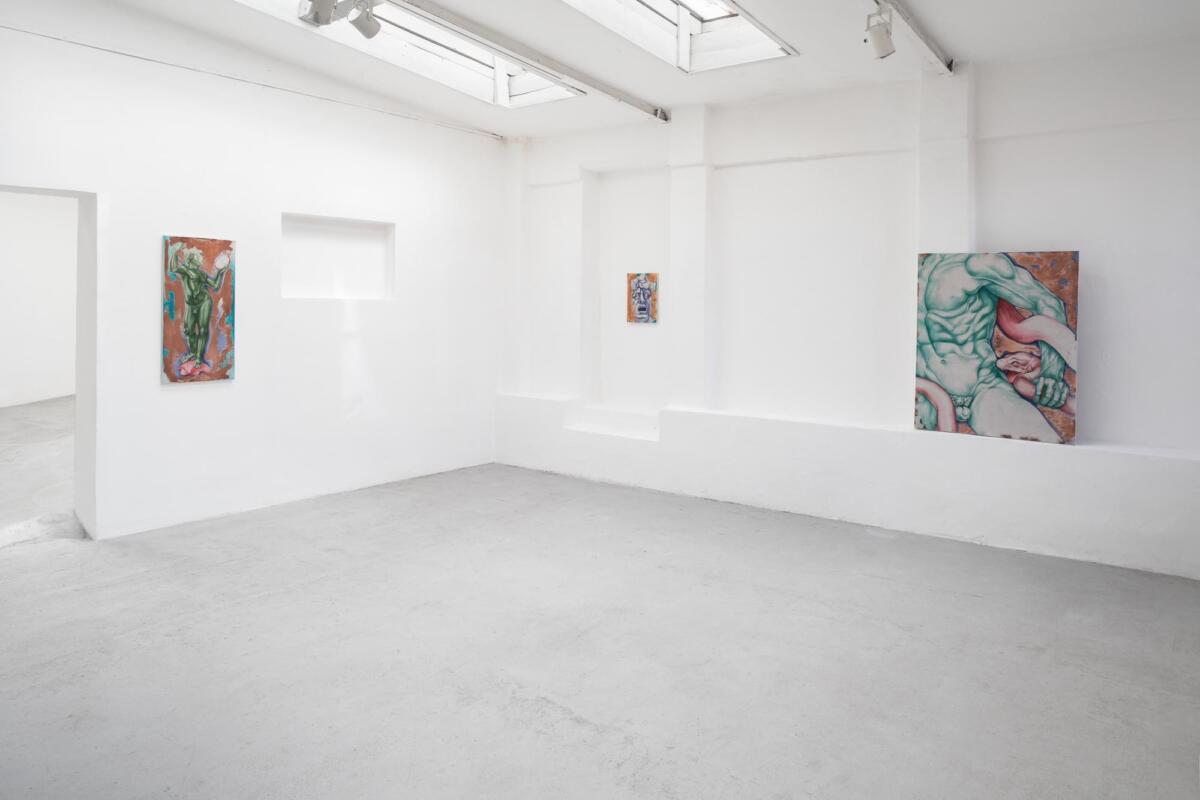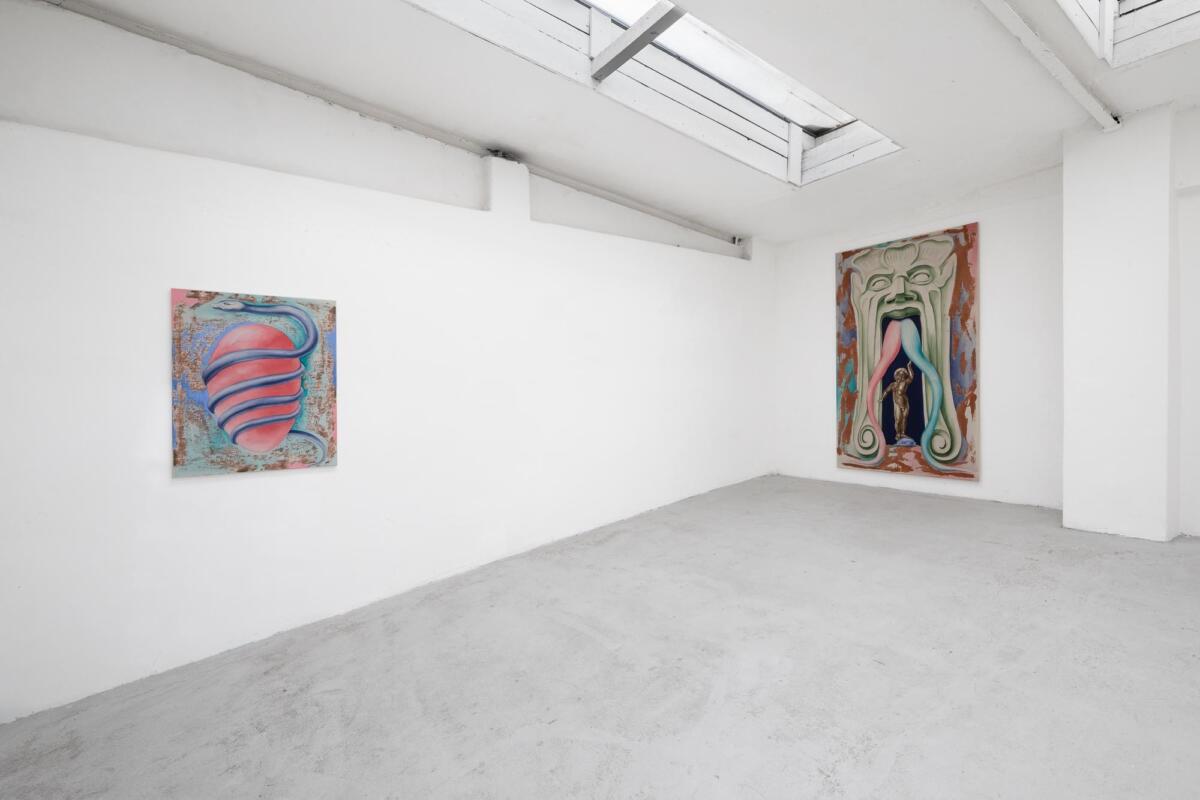![[EN/CZ] ‘Sweet Dance of Doom’ by Maciej Nowacki at Studio PRÁM](https://blokmagazine.com/wp-content/uploads/2021/06/maciej-nowacki-sweet-dance-of-doom-1-web-1200x800.jpg)
[EN]
text: Šárka Koudelová
In the last two years, the painterly approach of Maciej Nowacki (1991) has established as the contrast between formal elements. Almost illusively, the figures which our visual memory immediately ranks either among the specific, notoriously known sculptural works of art or among the conventional classical canon of figurative sculpture, ascend from the surfaces of the abstract space where Maciej examines the physical nature of the paintwork and lets the colour soak from the raw canvas underside. A free territory of only slightly controlled coincidence, filled up with the flourishing colour, as though creating mycelium for conceptually selected appropriations of embossed or 3D figurative motives, whose sculptured rigidity contrasts with its environment, similar to the chemical reaction.
Paintings which Maciej created during his stay in the Studio Prám deliver a consistent message, a subtle social commentary, which we can read in the tension between dramatic character of figures of adult men and playfulness of chubby little boys. Putti danzanti – dancing boys – is a popular motif in the Italian Renaissance and unsurprisingly represents beauty, innocence, and carefree flamboyance of boyhood, its naivety as well as fresh energy. Their charming frivolity contrasts with muscular exaggeration of Laocoon fighting for life and men’s faces shouting in cramps. The initial model of the small format painting of the shouting man is nothing darker than the sculptural group Comrades by Arno Breker – an architect and sculptor working for Nazi Germany. Not only Maciej investigates a slightly horrific duality of the Aryan idealism, i.e., its Nazi and inevitably erotic aspects, but primarily also current struggles within masculine identity. Toxic masculinity of an aging man with the so-called conservative values who, at the last minute, hysterically tries to seize power, divest a woman, weaker and different of decision-making, and to stop the transformation of the society as well as his own aging, is maybe too slowly replaced with a new generation of “boys”, peacefully refusing old orders based on strength, aggression, egoism, and fear of endangering their own position. The current situation in Maciej’s home country – Poland – shows how slow and difficult the replacement of shouting old men can be.
Displayed paintings show another recurring motif – a snake. In addition to the primary phallic denotation with the main thematic axis of the exhibition, traditionally, the snake is a symbol of sin as well as medicine. The snake is the bearer of the poison, which also has a healing potential. Are we able to utilize these dual properties of the serum in the current pandemic? If every crisis is a chance for change, can we live to see the transformation of masculinity and healing of the entire society?
Despite the feeling of entropy and inevitableness of the fall, Sweet Dance of Doom is not only a bitter hedonism or cynical dance on the graves of “straight white males”, who have driven the world into doom by their desire for infinite growth. It is a playful and little spiteful capering in the circle of the joy from the coming change.
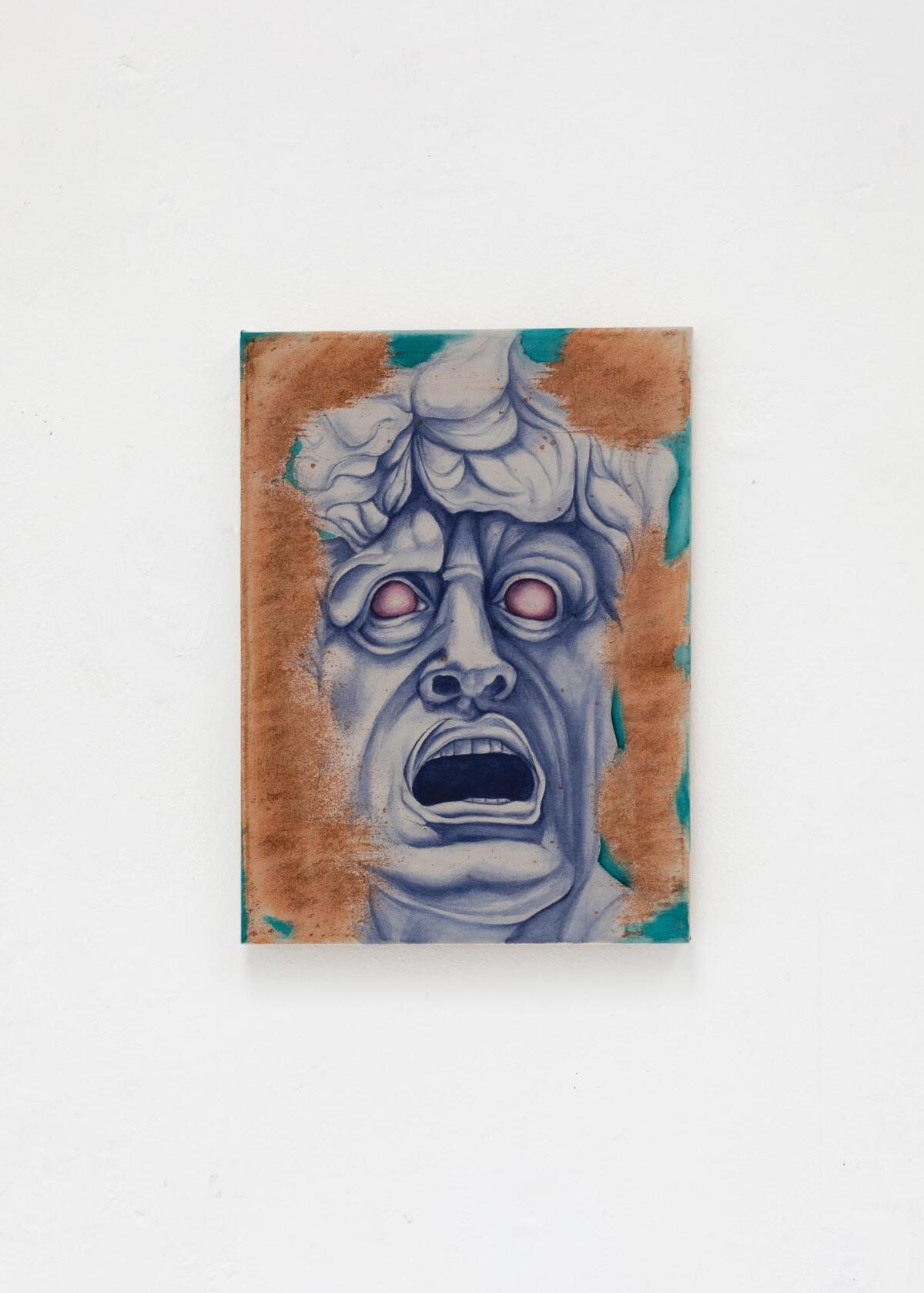



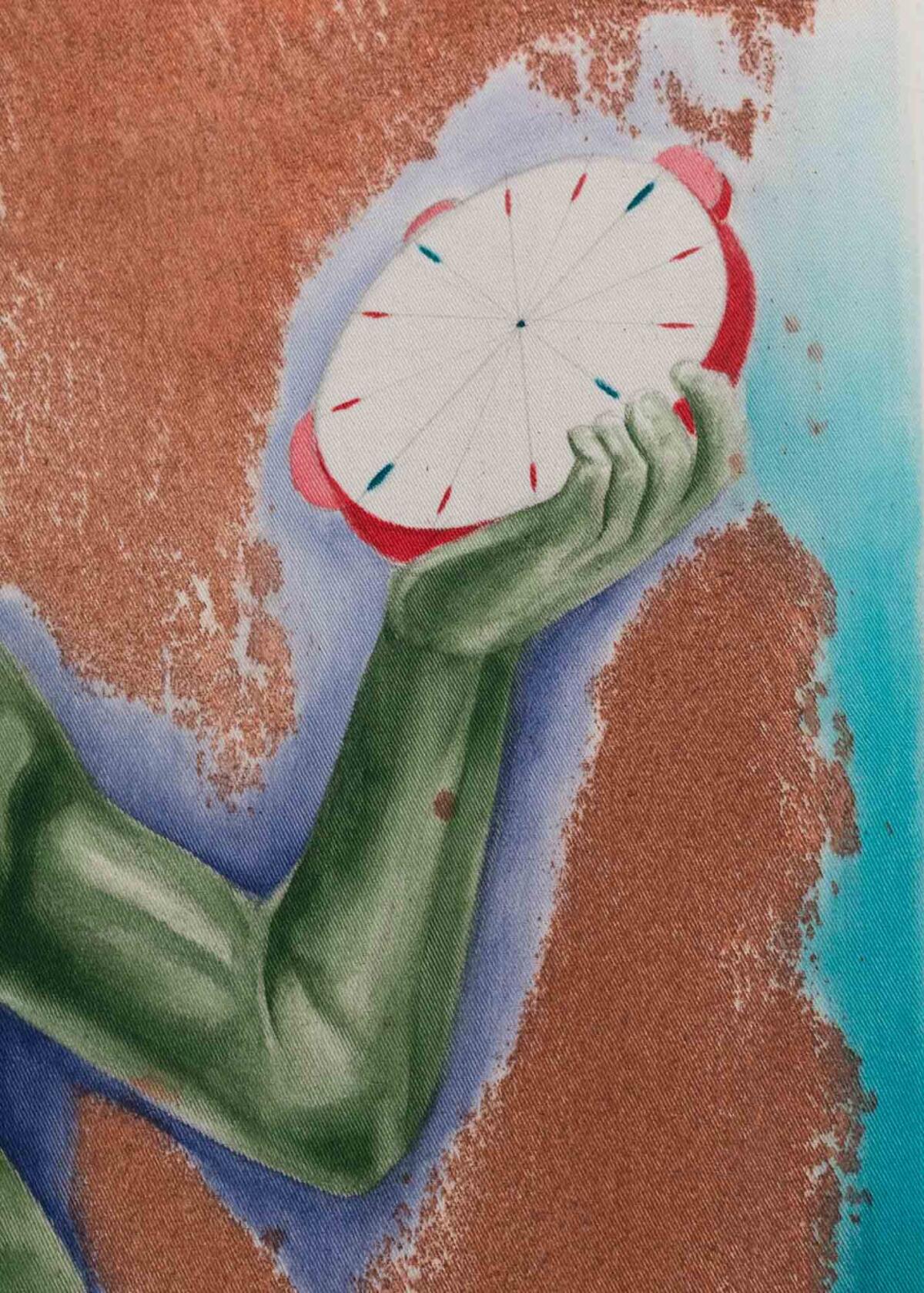

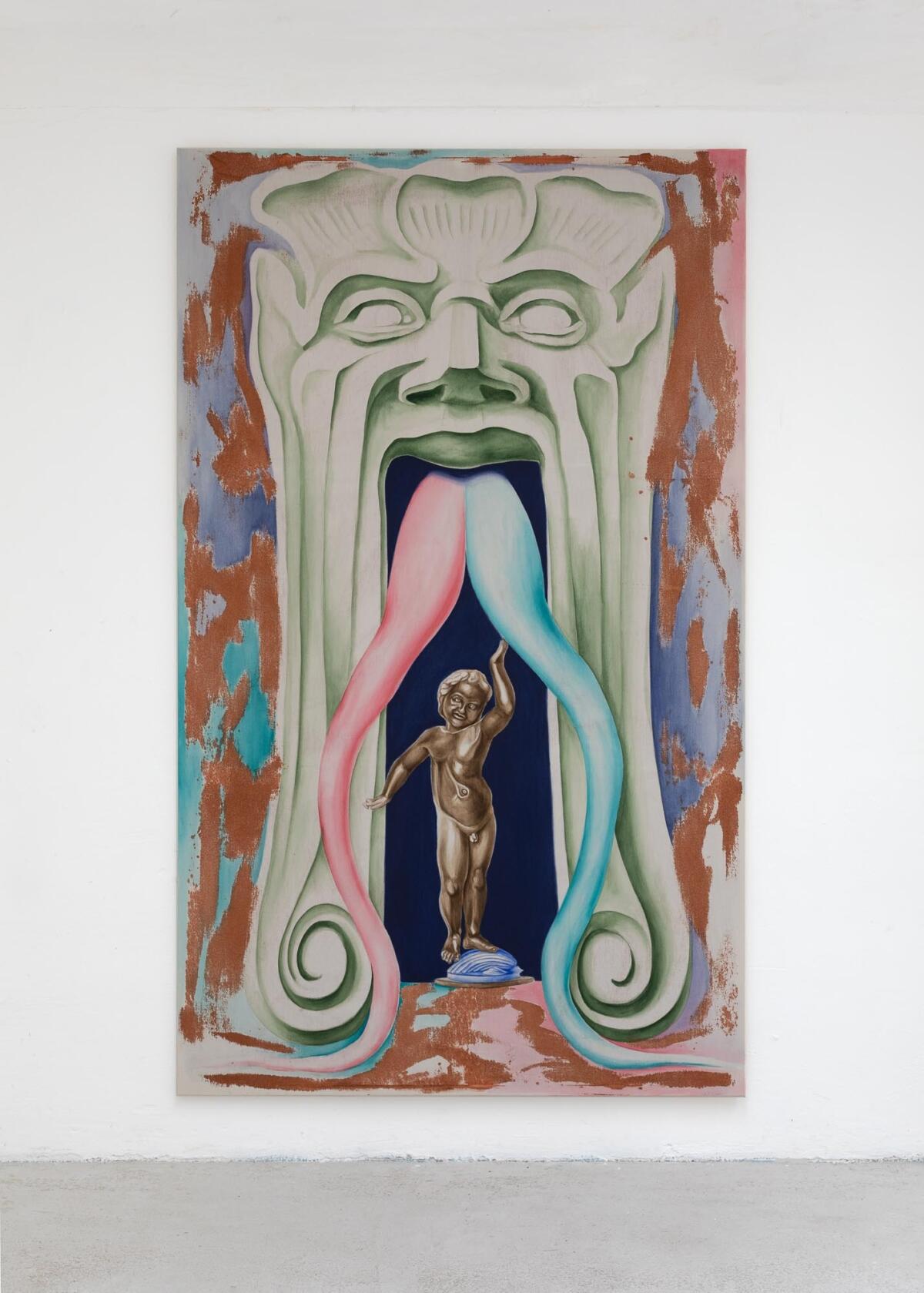
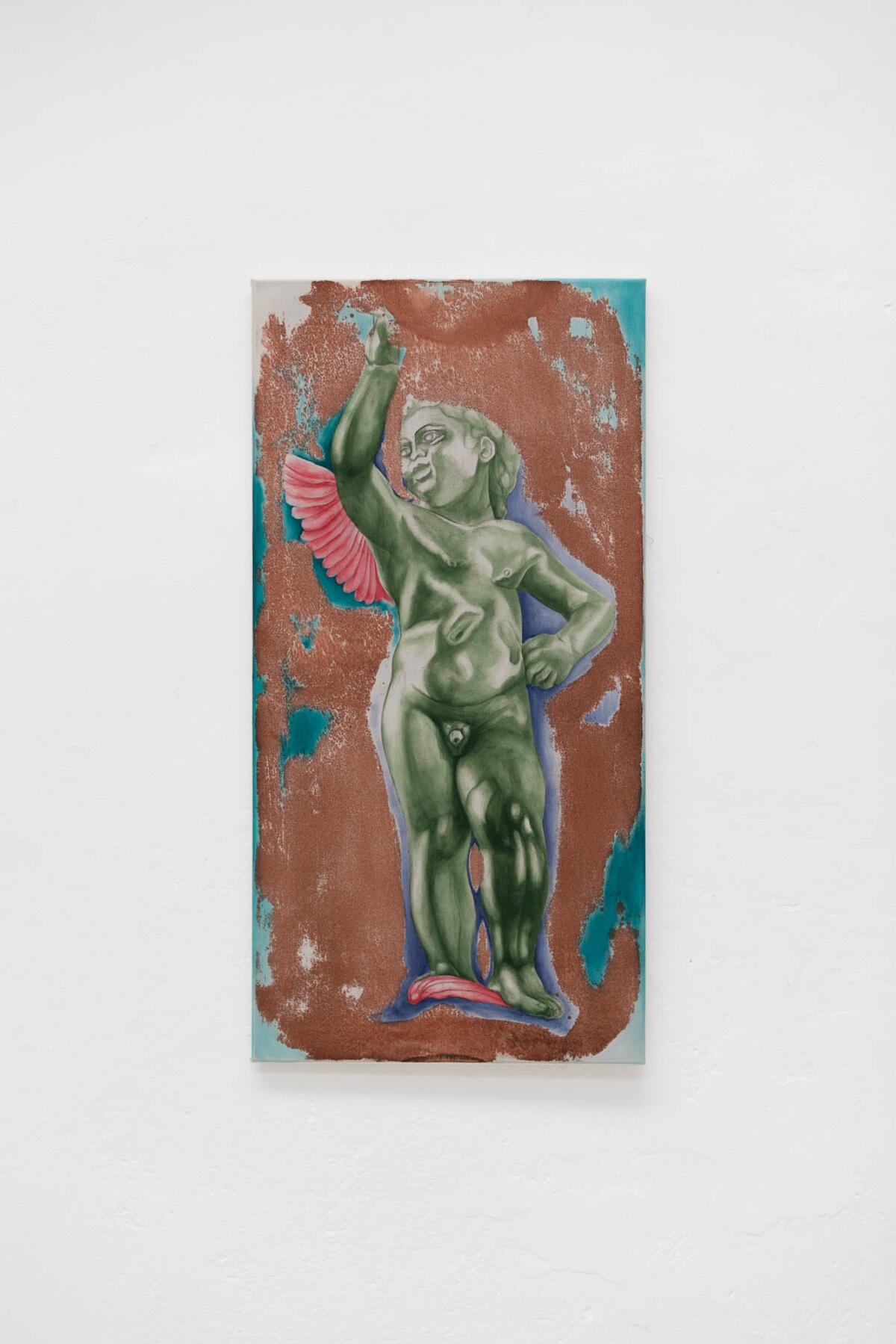
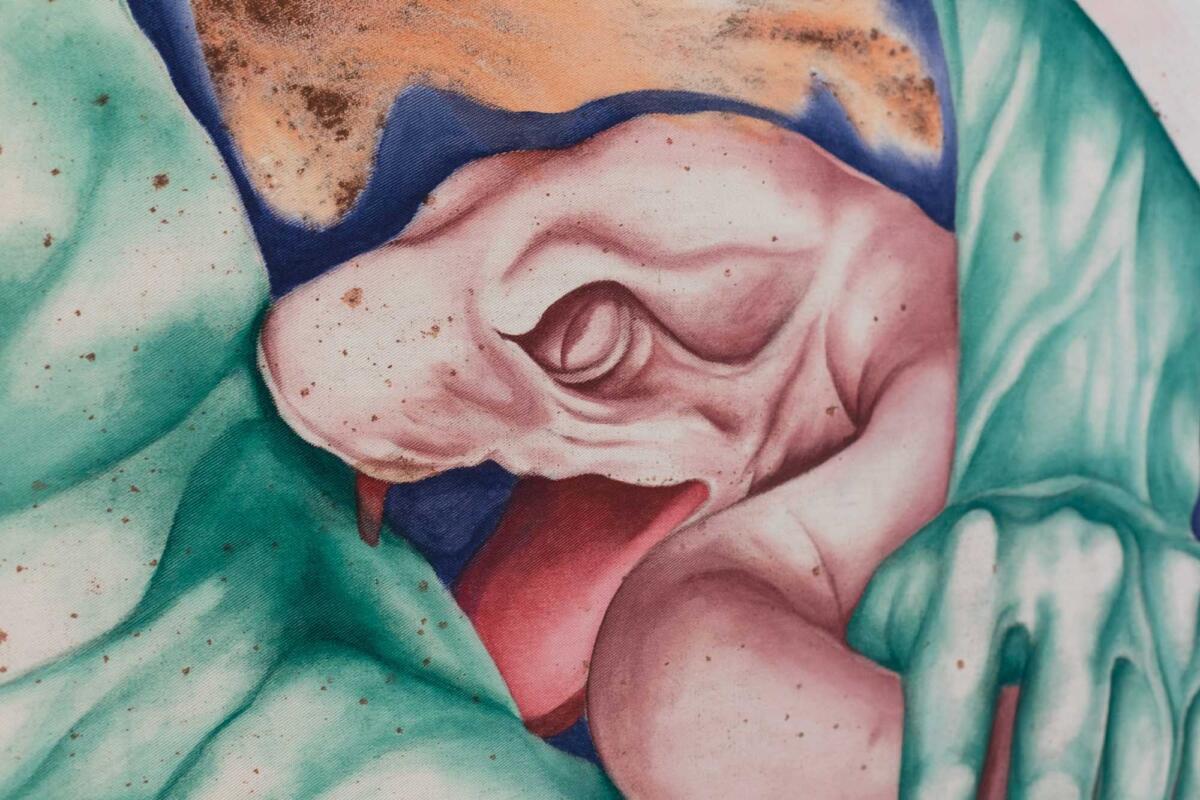
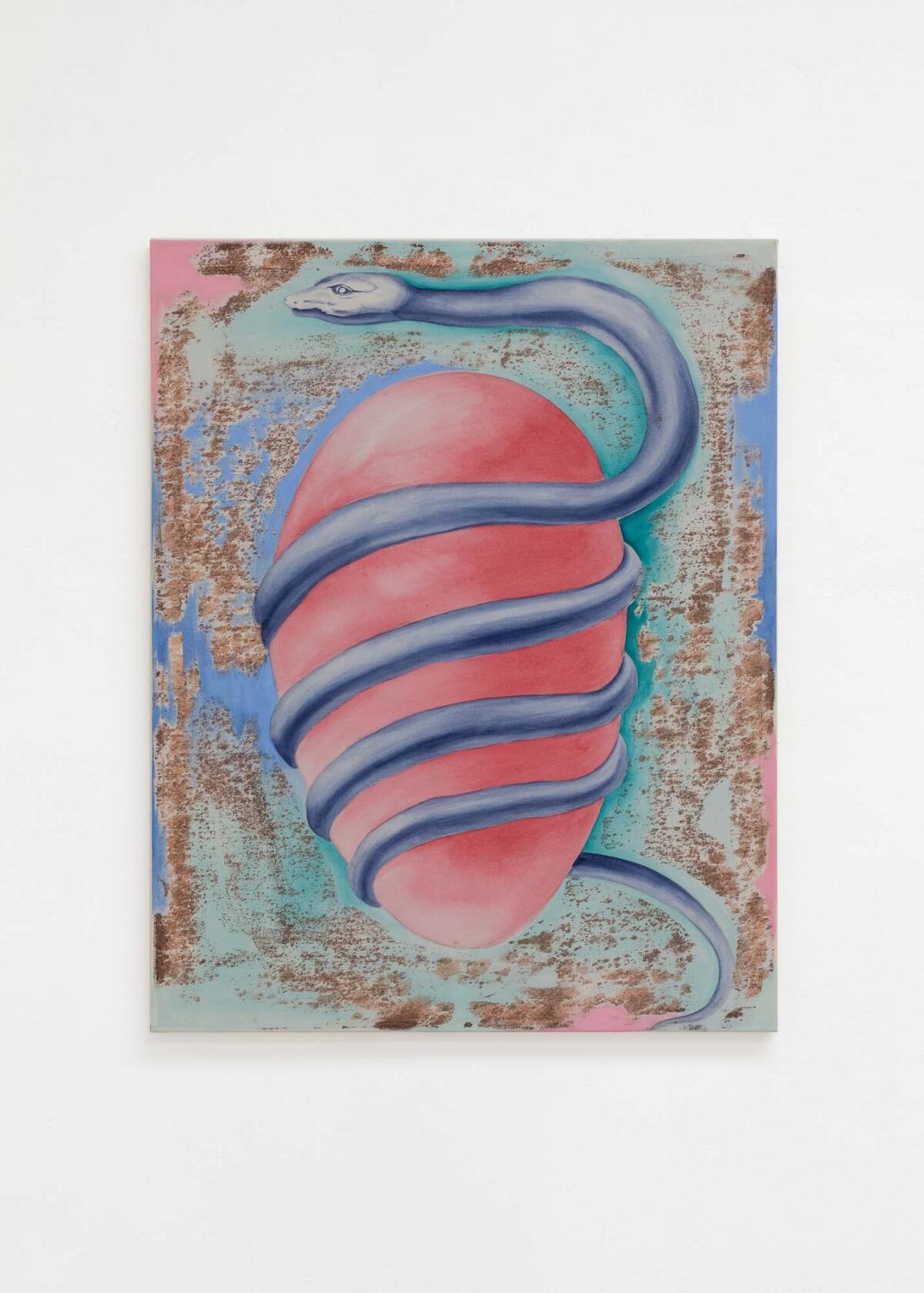
[CZ]
text: Šárka Koudelová
Malířský přístup Macieje Nowackiho (1991) se v posledních dvou letech ustálil na kontrastu formálních prvků. Z ploch abstraktního prostoru, ve kterém Maciej ohledává fyzickou podstatu malby a nechává prosakovat barvu z rubu nešepsovaného plátna, téměř iluzivně vystupují figury, které naše vizuální paměť okamžitě zařadí buď ke konkrétním, notoricky známým sochařským dílům nebo k obecnému klasickému kánonu figurálního sochařství. Svobodné území jen lehce řízené náhody, vyplněné prokvétající barvou, jakoby vytvářelo podhoubí pro konceptuálně vybrané apropriace reliéfních nebo trojrozměrných figurálních motivů, jejichž vysochaná ztuhlost a Maciejem přijatá původní stylizace kontrastuje se svým okolím, podobným chemické reakci.
Obrazy, které Maciej vytvořil během rezidence ve Studiu Prám jsou konzistentní zprávou, neprvoplánovým společenským komentářem, který můžeme číst v napětí mezi dramatičností figur dospělých mužů a hravostí tančících buclatých chlapečků. Putti danzanti – tančící chlapci – jsou motivem populárním v italské renesanci a nepřekvapivě reprezentují krásu, nevinnost a bezstarostnost chlapectví, jeho naivitu i čerstvou energii. Jejich roztomilá frivolnost kontrastuje se svalovou exaltovaností Láokoónta bojujícího o život a mužskými tvářemi křičícími v křeči. Předobrazem malého formátu křičícího muže není dokonce nic temnějšího než sousoší Soudruzi od Arno Brekera – architekta a sochaře pracujícího pro nacistické Německo. Maciej zde nezkoumá jen lehce děsivou dualitu árijského idealismu, tedy jeho nacistickou i nevyhnutelně erotickou stránku, ale především dualitu současného mužství. Toxickou maskulinitu stárnoucího muže s takzvanými konzervativními hodnotami, který se „na poslední chvíli“ snaží hystericky získat moc, zbavit ženy, slabší a odlišné rozhodování, zastavit proměnu společnosti a vlastní stárnutí, snad příliš pomalu nahrazuje nová generace „chlapců“, nenásilně odmítajících staré pořádky postavené na síle, agresi, egoismu a strachu z ohrožení vlastní pozice. Aktuální situace v Maciejově domovině – Polsku, ukazuje, jak pomalá a náročná obměna křičících starců může být.
Na vystavených obrazech najdeme další opakující se motiv – hada. Kromě primární falické spojitosti s hlavní tématickou osou výstavy je symbolem hříchu, ale i lékařství. Je tedy nositelem jedu, který může léčit. Jsme schopni využít těchto dvojakých vlastností séra u současné pandemie? Pokud je každá krize šancí pro změnu, dočkáme se transformace mužství i uzdravení celé společnosti?
I přes pocit entropie a neodvratnosti úpadku, není Sweet Dance of Doom jen trpkým hedonismem nebo cynickým tancem na hrobech „straight white males“, kteří touhou po nekonečném růstu dohnali svět do záhuby. Je hravým a trochu poťouchlým poskakováním v kruhu z radosti nad přicházející změnou.
Imprint
| Artist | Maciej Nowacki |
| Exhibition | Sweet Dance of Doom |
| Place / venue | Studio PRÁM, Prague, Czechia |
| Dates | 18 May – 31 May 2021 |
| Website | pramstudio.cz/ |
| Index | Maciej Nowacki Šárka Koudelová Studio PRÁM |

